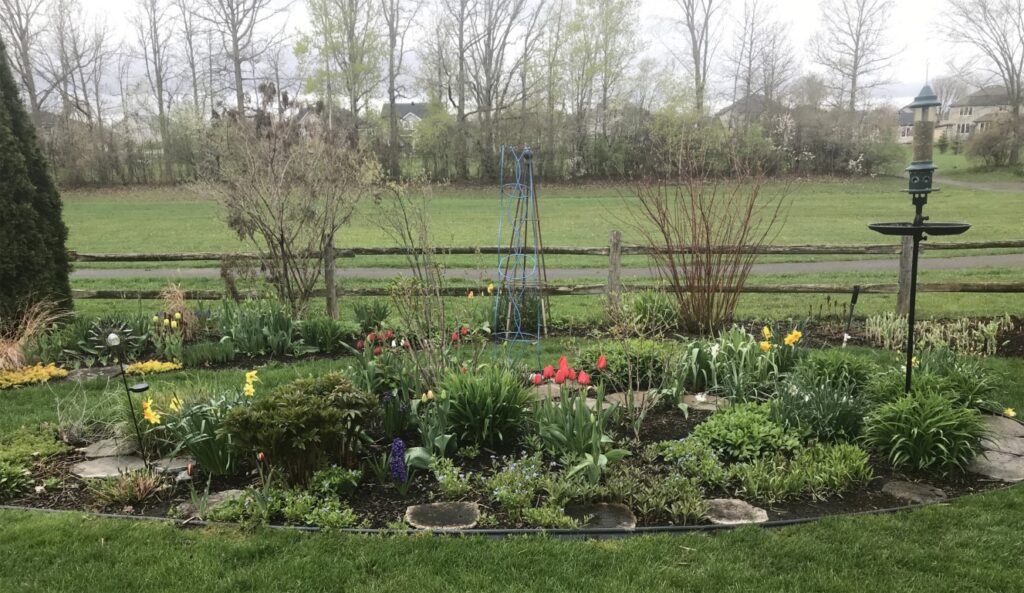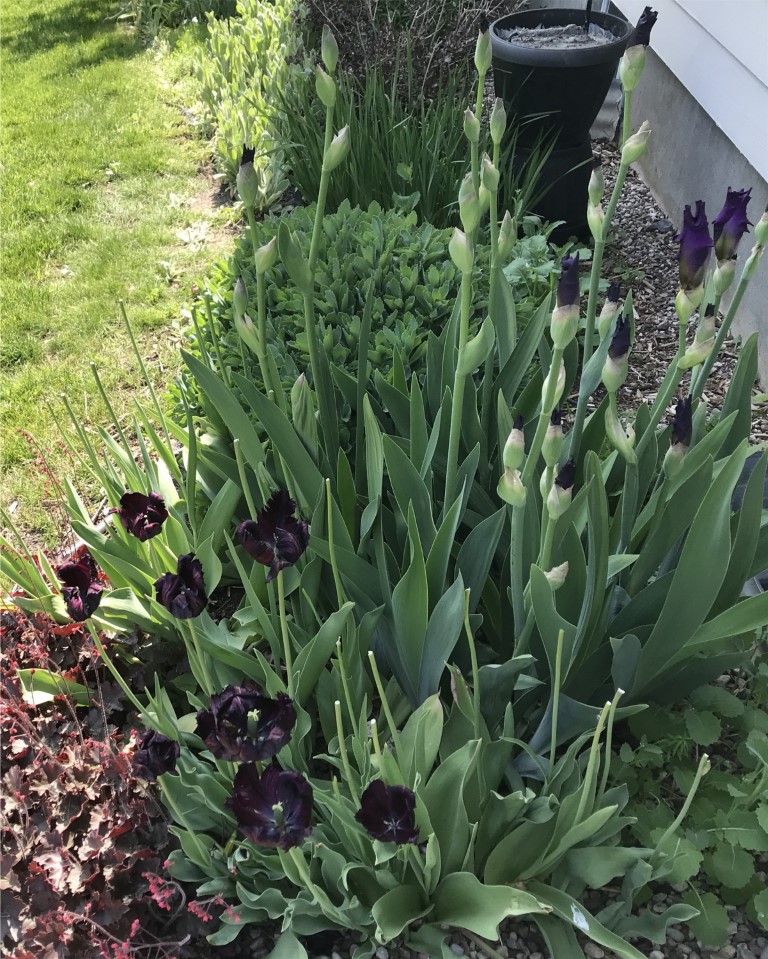Every gardener has their favourite season. What is yours? For me, it’s spring, and in particular, early spring. When daffodil time overlaps with the riot of tulip colour, I’m more energized, hopeful, and renewed than I am at any other time of the year.

Far too soon for me, the daffodils droop. Then the tulips start to fade and I wander the garden, snapping their blooms off to feed the bulb for next year.
The passing of this early spring season reminds me: change is the only constant.
No deep philosophy here, I’m just reminding myself to savour every season as it takes centre stage. (Okay, yes, I mean in life as well as in the garden!) To me, that means observing closely, noticing and maybe writing about what’s happening, or taking some photos. This savouring, I’ve found, seems to extend the length of the season. It also helps me to remember, which is another form of savouring.

Here’s something else I’ve discovered. When I observe closely, not only do I see what is, but I can also see the next season waiting in the wings. The tulip petals fall and I notice sturdy stalks of iris, the edges of their fat buds already showing colour. So I get this delicious little hint of delights to come. Have you noticed that, in life as well as in the garden?
Right now in my garden, as if to temper the loss of spring, is the glory that is June. Not for nothing has this month been celebrated by artists of all stripes for all time. It’s the prettiest of seasons, I think, and the most lush. It also marks the end of the brief time when not much has gone wrong yet – no drought, no insect infestation, no mistakes by the gardener – and all is possible. June is the blush of youth in her prime!
May you savour the beauty of June in your neighbourhood. May you also enjoy to the fullest the gifts of whatever phase of life you may be living! And please take a moment to savour my tributes to this gorgeous month: haiku with photos, “Irises” and “Peonies.”
Lee Ann
P.S. For those of you who are curious: a haiku is a structured poem first found in Japanese literature in the 17th century. It consists of seventeen syllables, in three lines of five, seven, and five, traditionally evoking images of the natural world. Aren’t you glad you asked?
Congratulations on an excellent blog post. I am privileged to experience what you write about in person.
Your forever companion
LB
Lovely. Thank you Lee Ann!
LE
Thanks for your feedback, Leanne! Very glad to have you ‘aboard’ and to know you liked this post.
Lovely as usual. Makes me want to be a better gardener and writer.
Thank you.
Thanks, M2! Lovely to know you are out there reading this!
As usual, very well written. We’re spending a lot of time in our garden. I love to hear your take on it.
Thanks, Yolly! I am glad you are also enjoying “the glory that is June!”